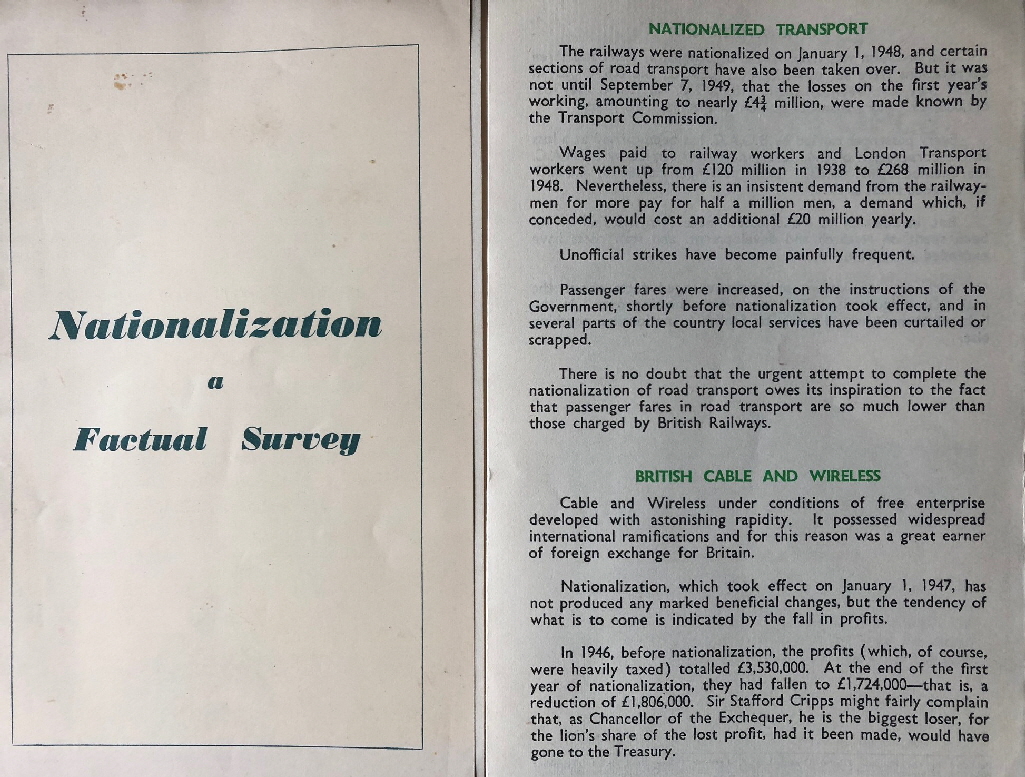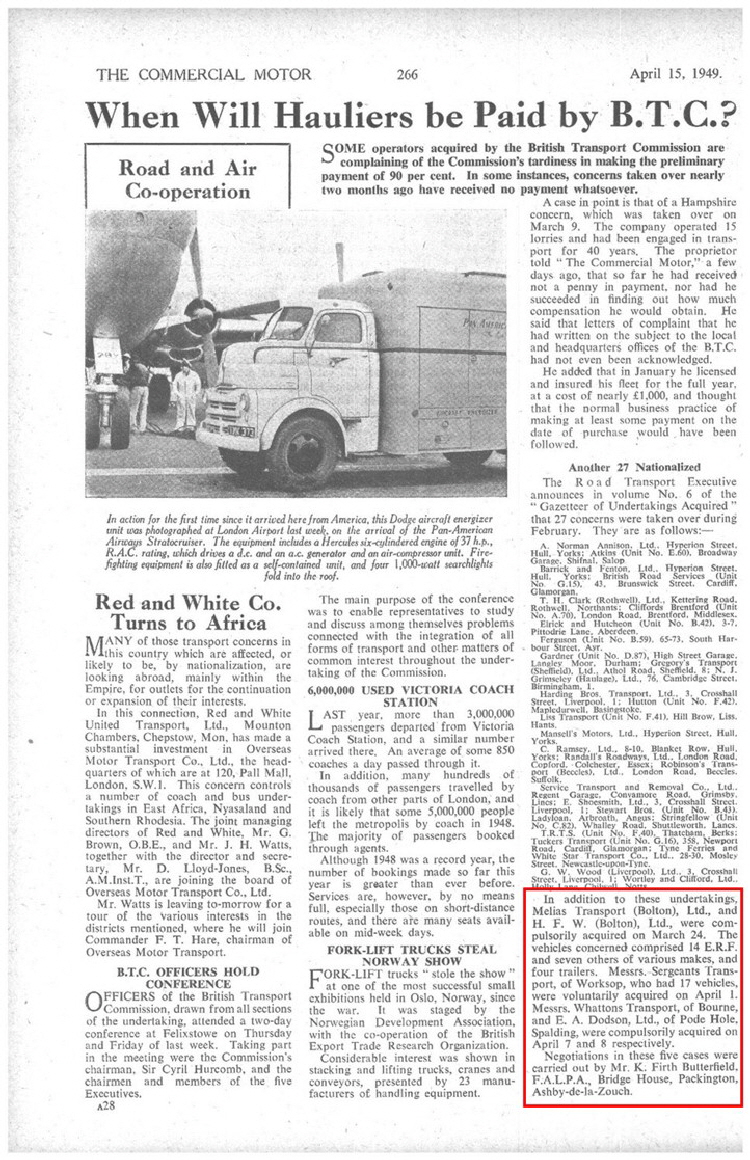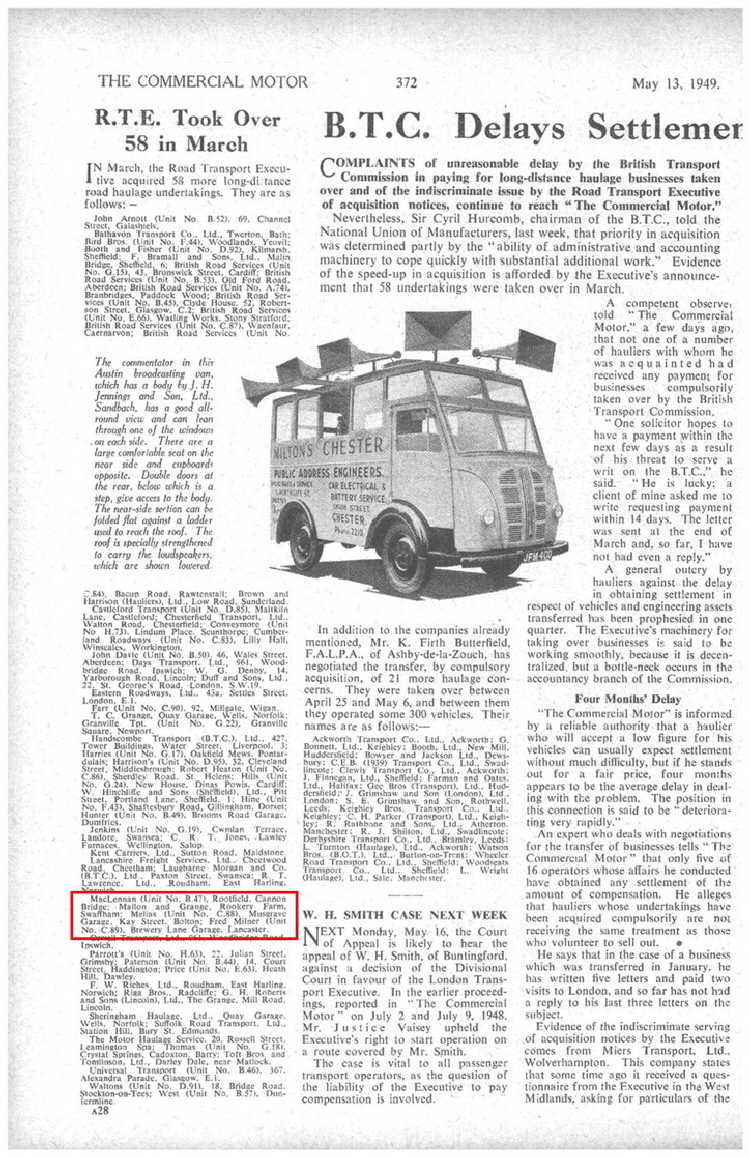Nationalisation
The rail strikes of 1919, 1924 and 1926 accelerated the transfer of goods transportation from rail to road. This caused increasing alarm within the Ministry of Transport, who were concerned that fierce competition from road hauliers would impede the commercial recovery of the rail system in a post WW1 Britain; it also rendered the capital infrastructure investment case more difficult.
By 1930 the railway companies had been granted the right to acquire road haulage firms, but their purchases were generally unsuccessful. Even being able to operate an integrated road and rail service failed to deliver bottom line profitability. Various reports were commissioned to investigate the problem with their output usually suggesting that it was rail’s comparative high fixed cost base that was the principle issue. The solution proposed was to legislate and restrict the commercial transport of goods. This manifested itself in the licencing system introduced in the 1930 and 1934 Road Traffic Acts.
Notwithstanding these new restrictions, rail still failed to provide cost and customer service effective competition to road; more radical solutions were sought. The Labour Party’s Herbert Morrisson examined the issue in some detail in a 1932 paper, ‘Socialisation of Transport’. This explored the problem and explained how commercial transport could be nationalised and migrated into a single national integrated road and rail service.
For a series of national and coalition governments during the late 1930s and early 1940s, nationalising the two industries failed to gain enough political traction to support legislation. However, Labour’s general election victory immediately after WW2 promoted the idea to the top of the agenda. It became a key policy issue, and it was not long before the ball started to roll in making the proposal become a reality. A newly formed Road Haulage Association (RHA) fought back with a largely ineffective anti-nationalisation campaign involving leaflets, petitions, rallies, and a film, ‘When the Wheels Slow Down’. Unfortunately, the political will to push a bill through parliament was unstoppable, especially with the rail unions applying considerable overt and covert pressure. The Road Transport Act received Royal Assent on August 6th 1947, and the process of acquiring the haulage industry started.

Leaflet published by the National Liberal Organisation in 1949. By the time this was released road haulage was already in public hands. However, anti-nationalisation sentiment was already growing, and the issue later formed a key domestic policy platform for what became the 1951 Conservative government.
The British Transport Commission (BTC) was established, as was the Road Transport Executive (RTE). The RTE had the power to compulsorily acquire road haulage companies, compensating them with BTC stock. BRS, British Road Services, became the designated operating entity for the road haulage industry, with acquired undertakings injected into it once compulsory acquisition had taken place.
RTE issued its initial ‘Monthly List of Acquired Undertakings’ in September 1948, a list of approximately two hundred formerly independent companies. Lists were then issued on a monthly basis until the RTE deemed the nationalisation of the industry complete.
The return of a Conservative government in 1951 marked the start of de-nationalisation, or the ‘privatisation’ of BRS. A new Act, The Transport Act 1953, received Royal Assent in November 1953. This formalised the enforced sale of BRS assets. In the following years over 20,000 BRS vehicles were sold via tender, although even with so many disposals the company still retained a good 13,000. BRS survived in a number of guises and brands until its final dissolution in the year 2000.
The London assets of Melias Transport (Bolton) Ltd became part of BRS’s London, North Western District (40A – 53A), specifically 49A, Finsbury. Its Kay Street head office and depot in Bolton was absorbed into the North Western Division, Manchester District, Bolton and Bury Group. Seven companies were initially part of this acquisition, including Melia’s Transport itself and H.F.W. At a later date, depots in Darwen, Liverpool, Oldham, Radcliffe and Salford were added.

